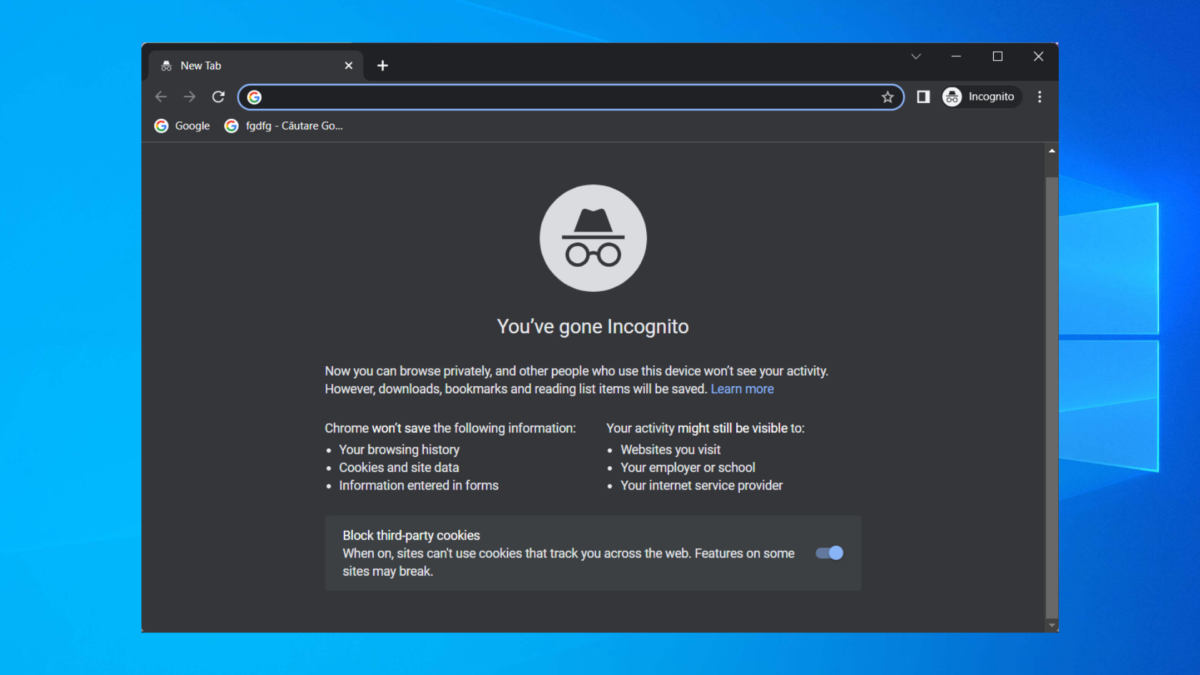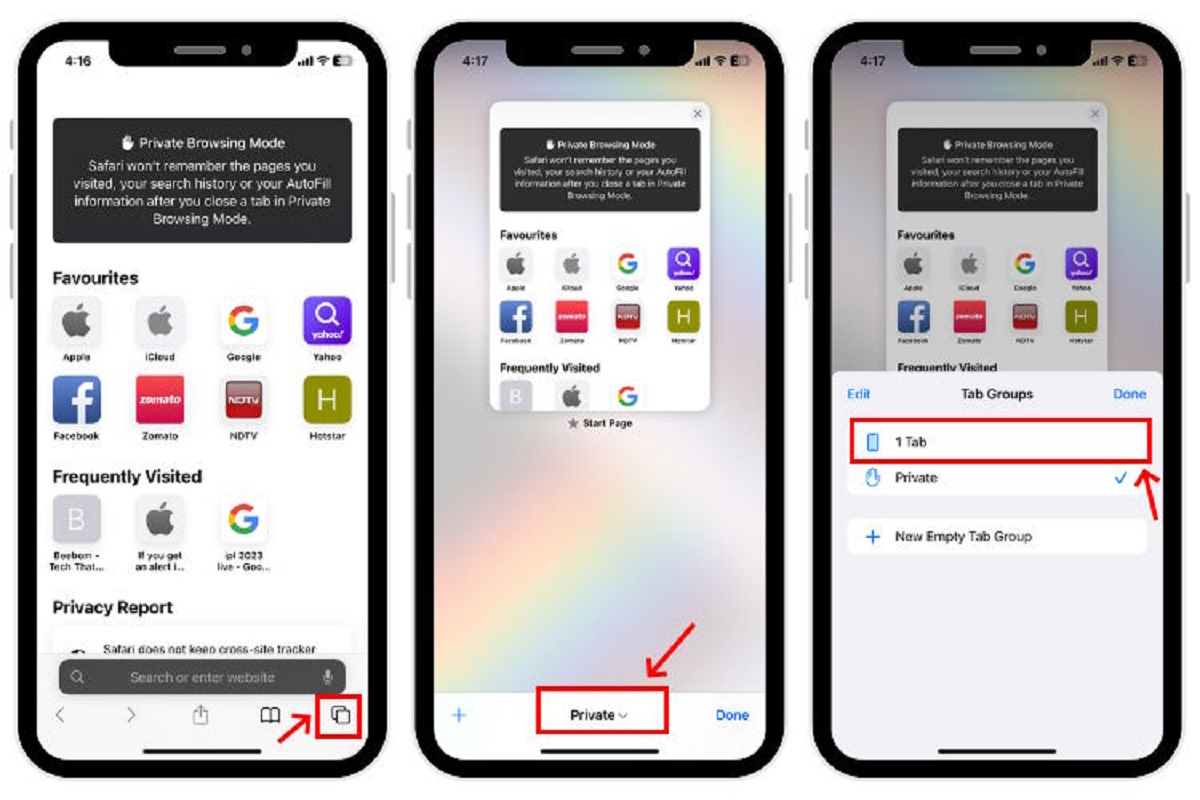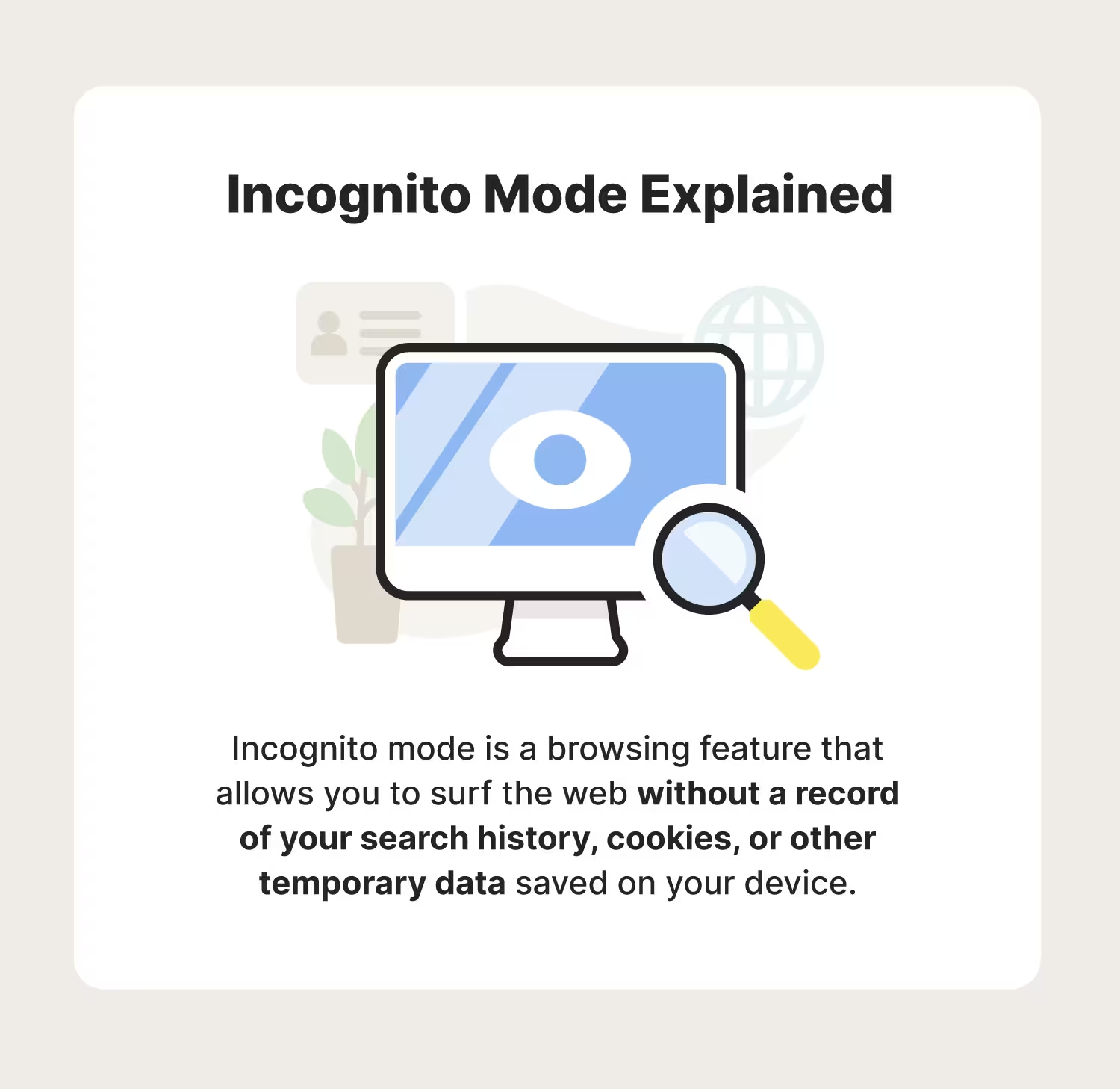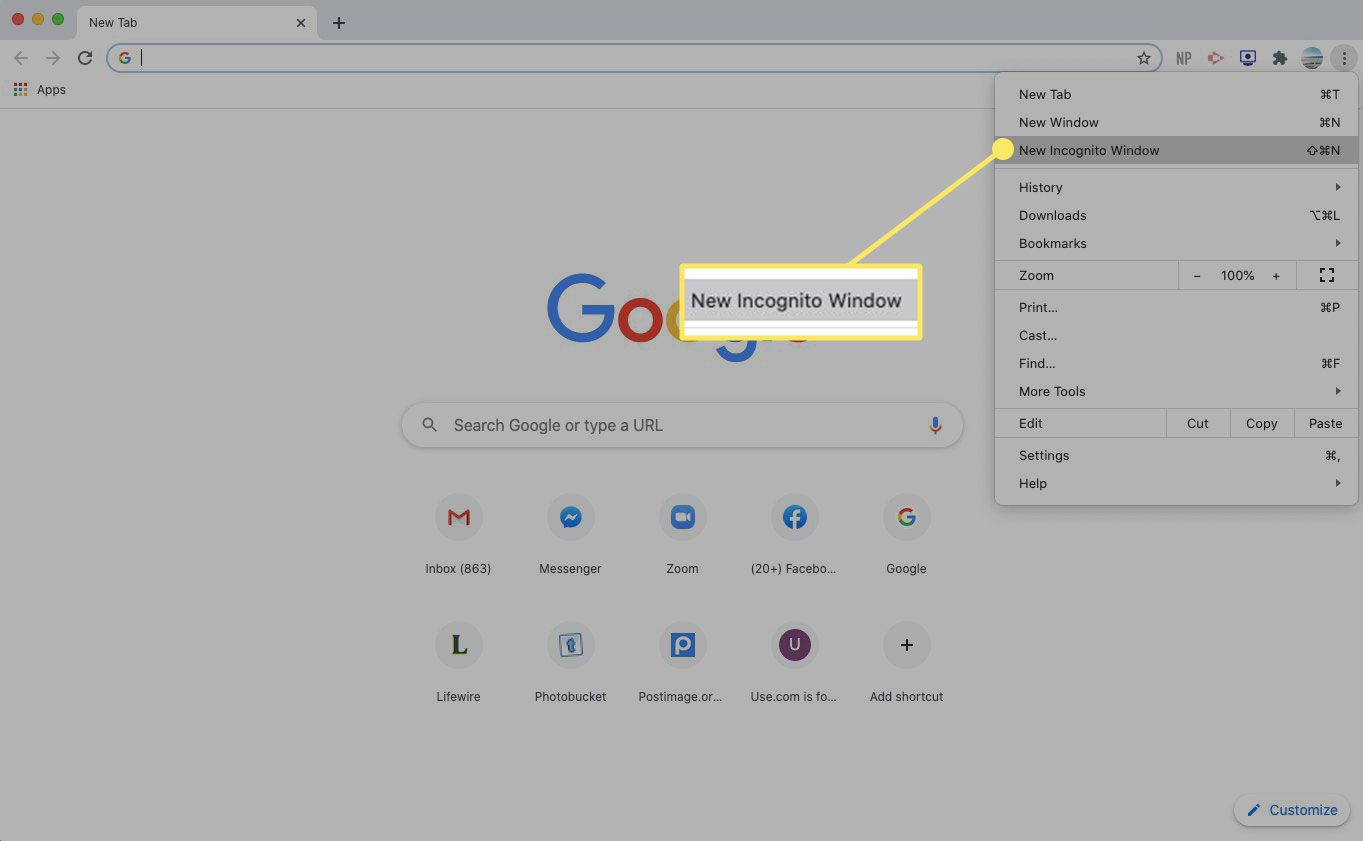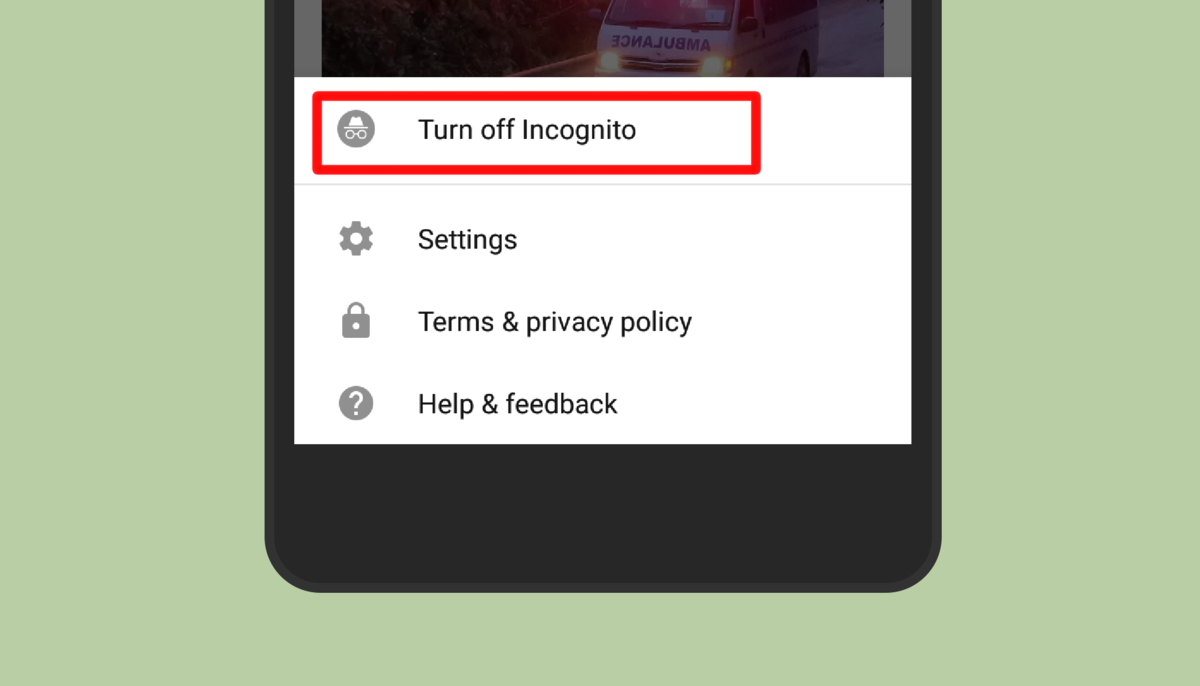Introduction
In today's digital age, web browsers have become an integral part of our daily lives. Whether it's for work, entertainment, or research, we rely on browsers to access a wealth of information at our fingertips. However, there are times when we may want to browse the web without leaving a trace of our online activity. This is where the concept of incognito browsing comes into play.
Incognito browsing, also known as private browsing or privacy mode, offers users a way to explore the internet without the browser storing any data about their session. It's like wearing an invisibility cloak while surfing the web. This feature is available in most modern web browsers, including Google Chrome, Mozilla Firefox, Safari, and Microsoft Edge.
When you open a new incognito window, the browser creates a temporary session that operates independently of your regular browsing session. This means that any websites you visit, files you download, or forms you fill out during the incognito session won't be saved in your browsing history, cookies, or search history. Once you close the incognito window, all the associated data is automatically deleted, leaving no digital footprint behind.
The concept of incognito browsing has gained popularity due to its ability to provide a layer of privacy and discretion for users. Whether you're shopping for a surprise gift, conducting sensitive research, or simply wanting to prevent websites from tracking your activity, incognito mode offers a level of anonymity that regular browsing does not.
In the following sections, we'll delve deeper into the mechanics of incognito browsing, its benefits, drawbacks, and the scenarios in which it's most useful. By understanding the nuances of incognito browsing, you'll be better equipped to leverage this feature effectively in your online activities.
Definition of Incognito Browser
An incognito browser, also referred to as private browsing or privacy mode, is a feature offered by modern web browsers that allows users to surf the internet without leaving behind a digital trail of their online activities. When a user initiates an incognito browsing session, the browser creates a temporary and isolated environment that operates independently of the regular browsing session. This means that any websites visited, files downloaded, or forms filled out during the incognito session are not stored in the browsing history, cookies, or search history.
The primary purpose of the incognito browser is to provide users with a level of privacy and discretion while navigating the web. By preventing the browser from retaining any data related to the incognito session, users can explore the internet without the fear of their browsing history being recorded, cookies being stored, or search queries being saved. This feature is particularly useful when individuals wish to maintain anonymity, prevent websites from tracking their activity, or avoid leaving traces of their online behavior on shared devices.
It's important to note that while incognito browsing offers a degree of privacy, it does not make users completely invisible or anonymous online. It primarily shields the local browsing history from being stored on the device. It does not encrypt internet traffic or hide the user's IP address from the websites they visit. Therefore, it's essential to understand the limitations of incognito browsing and not rely on it as a foolproof method for complete online anonymity.
In summary, an incognito browser provides users with a temporary and isolated browsing environment that does not retain browsing history, cookies, or search history. It serves as a tool for maintaining privacy and discretion while accessing the internet, making it a valuable feature for various online activities. Understanding the functionality and limitations of incognito browsing can empower users to make informed decisions about when and how to utilize this privacy-enhancing tool.
How Incognito Browsing Works
When you initiate an incognito browsing session, the web browser creates a temporary environment that operates separately from your regular browsing session. This isolated session functions with certain key features that distinguish it from standard browsing modes.
Data Isolation:
In incognito mode, the browser isolates the session from the regular browsing environment. This means that any websites visited, cookies downloaded, or forms filled out during the incognito session are kept separate from the main browsing data. As a result, none of the information generated during the incognito session is stored in the browsing history, search history, or cookies.
Temporary Session:
The incognito browsing session is temporary in nature. Once you close the incognito window, all associated data, including browsing history, cookies, and temporary files, are automatically deleted. This ensures that no traces of your online activity are left behind on the device you used for the incognito session.
User Anonymity:
While incognito browsing prevents the storage of local browsing data, it does not make users completely anonymous online. It does not encrypt internet traffic or conceal the user's IP address from the websites they visit. Therefore, it's important to recognize that incognito mode primarily shields the local browsing history from being stored on the device, rather than providing complete online anonymity.
Limitations:
It's crucial to understand the limitations of incognito browsing. While it prevents the browser from storing local data, it does not prevent internet service providers, employers, or websites from tracking your online activity. Additionally, any bookmarks or downloads made during the incognito session are retained after the session is closed.
In essence, incognito browsing works by creating a temporary and isolated browsing environment that does not retain browsing history, cookies, or search history. It offers a layer of privacy and discretion for users, allowing them to explore the internet without leaving behind a digital trail of their online activities. Understanding the mechanics of incognito browsing empowers users to make informed decisions about when and how to utilize this feature for their online privacy needs.
Benefits of Using Incognito Browsing
Incognito browsing offers a range of benefits that cater to users' privacy, security, and convenience. Understanding these advantages can help individuals leverage this feature effectively in various online scenarios.
-
Privacy Protection: One of the primary benefits of incognito browsing is its ability to safeguard users' privacy. By not storing browsing history, cookies, or search history, incognito mode ensures that sensitive or personal information related to the browsing session is not retained on the device. This is particularly valuable when using shared or public computers, as it prevents the exposure of personal browsing habits to other users.
-
Discreet Research and Browsing: Incognito mode enables users to conduct research or browse the web discreetly. Whether exploring sensitive topics, researching competitive information, or planning a surprise without leaving a digital trail, incognito browsing provides a level of discretion that regular browsing does not offer. This can be especially useful for professionals, researchers, and individuals seeking anonymity in their online activities.
-
Avoiding Targeted Advertisements: When using incognito mode, the browser does not store cookies or browsing history, which can help prevent targeted advertisements based on previous browsing behavior. This can lead to a more neutral and less personalized browsing experience, reducing the impact of targeted ads and potentially enhancing user privacy.
-
Multiple Account Management: Incognito browsing allows users to log into multiple accounts on the same website simultaneously. This can be beneficial for individuals managing different accounts, such as social media profiles or email accounts, without the need to constantly log in and out of their primary browsing session.
-
Testing and Troubleshooting: For web developers, incognito mode can be a valuable tool for testing websites and troubleshooting issues. By accessing a website in incognito mode, developers can simulate a fresh browsing session without cached data or stored cookies, helping to identify and resolve website-related problems more effectively.
-
Secure Online Transactions: When making online purchases or accessing financial accounts, incognito mode can provide an added layer of security. By not storing browsing history or form data, incognito browsing reduces the risk of sensitive information being exposed or accessed by unauthorized users.
-
Bypassing Paywalls and Restrictions: Some websites limit the number of articles or content accessible to users. Incognito mode can be used to bypass these restrictions, as the browsing session does not retain cookies or browsing history, allowing users to access content without being hindered by paywalls or viewing limits.
In summary, the benefits of using incognito browsing encompass privacy protection, discreet browsing, ad avoidance, multiple account management, testing capabilities, secure transactions, and bypassing restrictions. By leveraging these advantages, users can enhance their online privacy, security, and browsing experience in various contexts.
Drawbacks of Using Incognito Browsing
While incognito browsing offers valuable privacy and discretion, it is important to acknowledge its limitations and potential drawbacks. Understanding these drawbacks can help users make informed decisions about when and how to utilize incognito mode effectively.
-
Limited Privacy Protection: Despite its privacy benefits, incognito browsing does not provide complete anonymity or privacy. It primarily prevents the storage of local browsing data, such as history and cookies, on the user's device. However, it does not encrypt internet traffic or conceal the user's IP address from websites, internet service providers, or network administrators. As a result, while the local browsing history remains private, other entities may still track and monitor the user's online activities.
-
No Protection Against Malware and Phishing: When using incognito mode, users are not immune to malware, phishing attempts, or other online threats. While the browser may not retain information about the user's browsing session, it does not offer additional security measures to protect against malicious websites, fraudulent activities, or cyber threats. Users should remain vigilant and rely on comprehensive security measures, such as antivirus software and safe browsing practices, to mitigate these risks.
-
Limited Impact on Website Tracking: Incognito mode does not prevent websites from tracking user activity through methods such as browser fingerprinting, IP address tracking, or device identifiers. While it may limit the use of cookies for tracking, websites can still gather information about the user's online behavior through alternative means. As a result, incognito browsing may not provide complete protection against online tracking and profiling by websites and third-party entities.
-
No Protection on Shared Networks: When using incognito mode on shared or public networks, such as public Wi-Fi hotspots, the user's online activities may still be visible to network administrators or other users on the same network. Incognito mode does not encrypt internet traffic or provide secure connections, leaving users vulnerable to potential monitoring or interception of their data on unsecured networks.
-
Bookmarks and Downloads Remain Visible: While incognito mode prevents the storage of browsing history and cookies, any bookmarks or downloads made during the incognito session are retained after the session is closed. This means that certain elements of the user's online activities, such as saved bookmarks or downloaded files, may still be visible to others who have access to the device.
In summary, while incognito browsing offers advantages in terms of privacy and discretion, it is essential to recognize its limitations. Users should approach incognito mode as a tool for managing local browsing data, rather than a comprehensive solution for online privacy and security. By understanding the drawbacks of incognito browsing, individuals can make informed choices about when to utilize this feature and supplement it with additional privacy-enhancing measures when necessary.
When to Use Incognito Browsing
Incognito browsing can be strategically employed in various scenarios to enhance privacy, security, and convenience. Understanding the optimal use cases for incognito mode empowers users to leverage this feature effectively in their online activities.
-
Sensitive Research and Browsing: When conducting research on sensitive topics, such as health concerns, legal matters, or personal finance, incognito browsing can provide a layer of discretion. It prevents the accumulation of browsing history and cookies related to sensitive subjects, reducing the risk of unintentional exposure or data retention.
-
Shared or Public Devices: Utilizing incognito mode on shared or public computers, such as those in libraries, internet cafes, or coworking spaces, can safeguard personal privacy. It ensures that no traces of the user's browsing activities, including login credentials and visited websites, are left behind for subsequent users.
-
Surprise Gift Purchases: When shopping for gifts or planning surprise events, incognito browsing prevents the browser from storing information about specific products or websites visited. This helps maintain the element of surprise and prevents targeted advertisements related to the gift items from appearing in the user's regular browsing sessions.
-
Avoiding Personalization and Tracking: Incognito mode can be used to explore the web without the influence of personalized search results, targeted advertisements, or location-based content. This is particularly useful when users want to access neutral search results or prevent websites from tailoring content based on their previous browsing behavior.
-
Testing and Troubleshooting: Web developers and IT professionals can benefit from using incognito mode to test websites, troubleshoot issues, and simulate fresh browsing sessions. By avoiding cached data and stored cookies, incognito mode facilitates accurate testing and helps identify website-related problems more effectively.
-
Secure Transactions and Account Management: When accessing online banking, making financial transactions, or managing multiple accounts, incognito mode offers an added layer of security. It prevents the retention of sensitive information, such as login credentials and transaction history, on the device, reducing the risk of unauthorized access.
-
Bypassing Viewing Limits and Paywalls: Incognito browsing can be employed to bypass viewing limits on certain websites or access content behind paywalls. By not storing cookies or browsing history, users can navigate around restrictions that limit the number of articles or content accessible in regular browsing sessions.
In summary, incognito browsing serves as a versatile tool for enhancing privacy, discretion, and security in a variety of online scenarios. By recognizing the optimal use cases for incognito mode, users can harness its benefits to navigate the web with greater control over their digital footprint and online interactions.
Conclusion
In conclusion, the concept of incognito browsing offers a valuable layer of privacy, discretion, and control for users navigating the vast landscape of the internet. By creating a temporary and isolated browsing environment that does not retain browsing history, cookies, or search history, incognito mode empowers individuals to explore the web without leaving behind a digital trail of their online activities. This feature is particularly beneficial in scenarios where privacy, security, and anonymity are paramount.
While incognito browsing provides numerous advantages, it is important to recognize its limitations. Incognito mode primarily shields local browsing data from being stored on the device, but it does not offer complete anonymity or protection against online threats. Users should approach incognito mode as a tool for managing local browsing data, supplementing it with comprehensive security measures and safe browsing practices to mitigate potential risks.
The optimal use cases for incognito browsing span a wide range of scenarios, including sensitive research, shared or public devices, surprise gift purchases, personalized content avoidance, testing and troubleshooting, secure transactions, and bypassing viewing limits. By strategically employing incognito mode in these contexts, users can enhance their online privacy, security, and browsing experience.
It's important to note that while incognito browsing provides a degree of privacy, it does not make users completely invisible or anonymous online. It primarily shields the local browsing history from being stored on the device, but it does not encrypt internet traffic or hide the user's IP address from the websites they visit. Therefore, it's essential to understand the limitations of incognito browsing and not rely on it as a foolproof method for complete online anonymity.
In essence, incognito browsing serves as a valuable tool for managing privacy and discretion in various online activities. By understanding the mechanics, benefits, drawbacks, and optimal use cases of incognito mode, users can make informed decisions about when and how to leverage this feature effectively. Whether it's safeguarding sensitive research, maintaining anonymity on shared devices, or avoiding personalized content, incognito browsing offers a versatile and practical solution for navigating the web with greater control over one's digital footprint.










